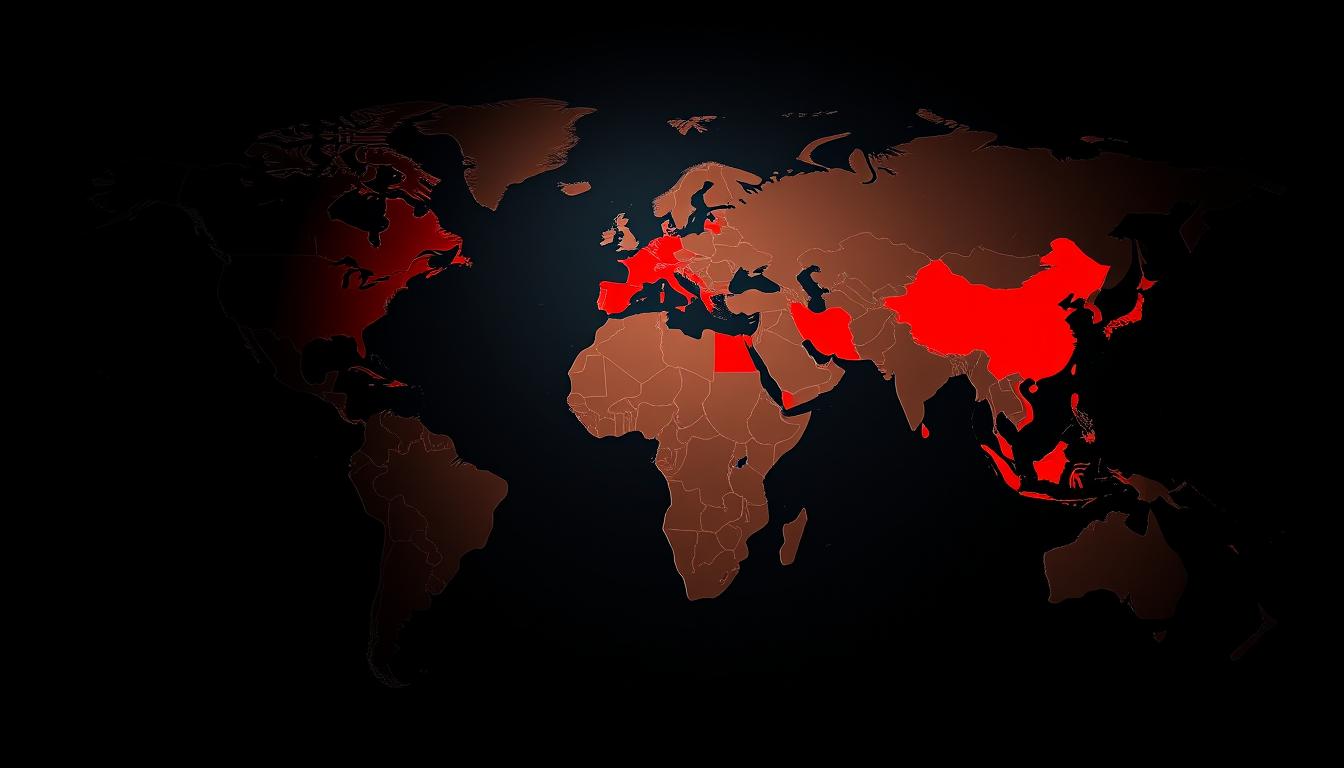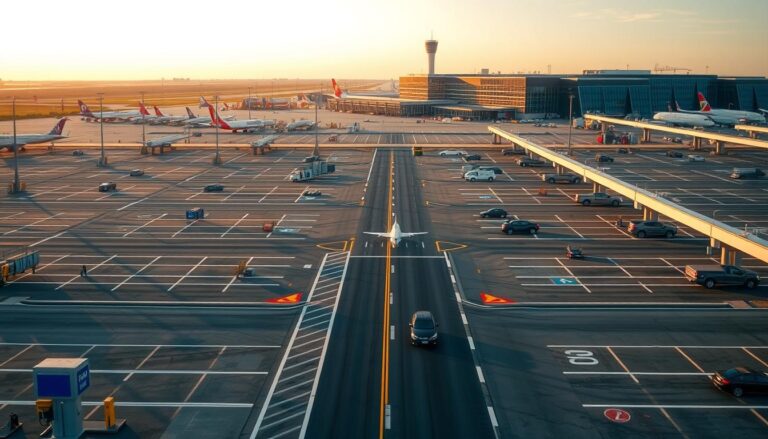2025 U.S. Travel Ban: Full List of 43 Affected Countries & Caribbean Restrictions
Travel Ban Explained: Which 43 Countries Are Affected by the U.S. Proposal?

Table of Contents
Did you know about 39% of international travelers could face the U.S. travel ban? This ban affects 43 countries. It’s one of the biggest border control moves in U.S. history.
The 43 countries travel ban will change how we move around the world. It will make traveling harder for people, businesses, and countries. It’s important to understand these new rules if you travel internationally or work with people from other countries.
These new rules might change your travel plans a lot. The U.S. government made these rules to protect the country from security or health risks. They chose areas they think could be dangers.
In this guide, we’ll cover the key points of the travel ban. You’ll find out which countries are banned, who might be exempt, and what it means for travelers. This info is vital for anyone who travels, works, or studies abroad.
Whether you’re a business person, student, or just a traveler, this guide will help you. It will explain the U.S. immigration rules and travel guidelines in simple terms.
Understanding the Latest U.S. Travel Ban Implementation
Traveling internationally during a pandemic is complex. It requires keeping up with the latest covid-19 travel advisories. The recent U.S. travel restrictions are a big change for travelers everywhere. They affect how people can enter the country and move across borders.
Putting travel restrictions in place is a big job. It needs teamwork from governments and careful planning. Travelers must know the details of these important decisions.
Key Dates and Timeline
Knowing when the travel ban started helps you get ready. The main dates are:
- Initial announcement date
- Effective implementation period
- Potential review and modification dates
Legal Framework and Authority
The travel restrictions have a legal basis. Governments use health laws and work with other countries to set entry rules.
- Federal public health emergency declarations
- Interagency coordination protocols
- Diplomatic consultation processes
Implementation Process
Putting the travel restrictions into action is a detailed process. Border officials and immigration teams work together. They make sure the covid-19 travel advisories are followed.
- Enhanced medical screenings
- Documentation verification systems
- Real-time monitoring mechanisms
Stay proactive and informed to navigate these unprecedented travel challenges effectively.
Complete List of 43 Countries Travel Ban Regions
Traveling internationally can be tough with the 43 countries travel ban. It has made planning trips hard across many continents. Knowing which areas are banned helps you plan better.
Travel bans cover many places, making it hard to move around the world. Your travel plans might be affected by these rules.
- Africa: Multiple countries experiencing travel limitations
- Middle East: Significant travel restrictions in place
- Asia: Widespread global mobility challenges
- South America: Selective travel ban implementations
Travelers need to check the countries in the 43 countries travel ban. Each area has its own rules that might stop you from entering or passing through.
| Continent | Countries Affected | Restriction Level |
|---|---|---|
| Africa | Sudan, Somalia, Libya | High |
| Middle East | Iran, Syria, Yemen | Severe |
| Asia | North Korea, Venezuela | Extreme |
Remember, travel rules can change fast. Always check the latest info before you travel.
Impact on International Travel and Tourism
Recent travel restrictions have shaken the global tourism and transportation worlds. New rules on moving across borders are changing how we travel. This is causing big problems for many industries.
Your travel plans might look very different now. These changes are affecting all kinds of travel, from fun trips to work-related ones.
Economic Effects on Airlines
Airlines are facing huge financial challenges because of these new rules. The effects are clear:
- Less room for passengers
- Big losses in money
- Canceled flights
- Higher costs to run operations
Tourism Industry Transformations
Tourism is quickly changing to meet new travel rules. Places are finding new ways to draw visitors while keeping everyone safe.
| Tourism Sector | Projected Impact | Adaptation Strategy |
|---|---|---|
| Hospitality | -45% Revenue | Enhanced safety measures |
| Travel Agencies | -60% Bookings | Flexible cancellation policies |
| Tourist Attractions | -55% Visitor Numbers | Digital and virtual experiences |
Business Travel Disruptions
Companies are now thinking differently about traveling abroad. Virtual meetings and remote work tools are key for replacing old business trips.
Your company might need to create new rules for travel. This will help balance work needs with safety under current rules.
Entry Requirements and Visa Processing Changes
Traveling internationally has become more complex with new visa rules. The changes in entry policies have made planning trips to the United States harder. You need to know about important updates that could change your travel plans.
Key changes to visa processing include:
- Stricter documentation verification processes
- Enhanced background check procedures
- Extended processing times for certain visa categories
- Additional screening for travelers from specific regions
Your visa application now needs more detailed documents. Digital verification systems have been introduced to make entry policies stricter and safer. Make sure all your documents are correct and current to avoid delays or rejections.
The new visa rules affect:
- Tourist and business travelers
- Student visa applicants
- Work permit seekers
- Family-based immigration applications
“Preparation is key to successful international travel in this new regulatory environment.” – U.S. Department of State
If you’re planning to travel, check the official U.S. immigration website for the latest visa rules. Every traveler’s situation is different. You might need special documents or extra steps in the visa process.
Exceptions and Special Considerations for Travelers
Traveling during a pandemic can be tough, especially for those who must travel internationally. The U.S. government knows some travelers face unique situations. They offer special rules for these cases.
There are specific rules for certain groups who must travel. These rules aim to protect public health while meeting essential needs.
Humanitarian Cases
People in urgent humanitarian situations might get special treatment. These cases often include:
- Medical emergencies needing quick care
- Family reunions in dire situations
- Escaping immediate danger
Essential Workers
Some jobs are key during the pandemic. Workers in these roles might get to enter the U.S. They include:
- Healthcare workers
- Emergency responders
- Workers keeping critical infrastructure running
- Those in transportation and logistics
Students and Academics
Students and academics might also get special travel rules. To qualify, you’ll need:
- To be enrolled in a U.S. school
- Valid school documents
- Proof of ongoing academic work
Note: Each situation is different. Always check the latest official guidelines and embassy rules for the most current info.
Border Control Measures and Screening Procedures

Understanding the new border control measures can be tough. But knowing the latest entry policies helps you travel smoothly. The U.S. has set up detailed screening to keep everyone safe.
When you enter the country, you’ll see several important steps. These steps are to protect everyone. They include:
- Enhanced document verification processes
- Advanced health screening checkpoints
- Biometric identification technologies
- Detailed travel history assessments
Being ready is key for a smooth entry. Travelers should expect:
- Longer processing times at immigration
- Mandatory health questionnaires
- Potential temperature checks
- Additional documentation requirements
Pro tip: Always carry comprehensive documentation and be prepared for thorough screening at border control points. The U.S. has made its entry policies stricter. This is to keep the country safe while still allowing international travel.
Patience and cooperation are key when navigating these new border control measures.
Digital health verification and advanced screening are now part of the entry process. Travelers will face modern security measures. These measures aim to keep everyone safe while managing borders efficiently.
Duration and Potential Extensions of Travel Restrictions
Understanding international travel restrictions during the covid-19 travel advisory is key. The U.S. government keeps changing travel rules to keep people safe and avoid economic harm.
The current travel rules are not set in stone. They change often based on important factors:
- Global infection rates
- Vaccination progress
- Emerging virus variants
- Healthcare system capacity
Review Process
Health experts review travel rules every 30-60 days. They look at many things, like:
- World Health Organization reports
- Centers for Disease Control recommendations
- Country health statistics
Modification Criteria
When to change travel rules depends on certain goals. Important factors include:
- Lowered infection rates
- More people getting vaccinated
- Better testing and tracing
Keep up with changes by checking official travel advisory websites. Also, talk to your local embassy or consulate.
Alternative Travel Routes and Options
Traveling around the world can be tough with travel bans. But, your trip doesn’t have to stop. With smart planning and creative routes, you can still get where you need to go.
Here are some ways to beat travel restrictions:
- Look into transit countries with easier entry rules
- Check out journeys through neutral areas
- Find flights that skip around direct travel bans
Understanding each country’s entry rules is key. Some places have special ways to travel that avoid direct bans.
| Alternative Route Strategy | Potential Benefits |
|---|---|
| Third-Country Transit | Bypass direct travel restrictions |
| Regional Connection Points | Leverage more open border policies |
| Diplomatic Corridor Routes | Access special travel permissions |
Travel experts can help you navigate the world’s travel rules. Being prepared and flexible is crucial when facing travel hurdles.
“Adaptability defines successful global travelers in uncertain times.” – International Travel Expert
Impact on Permanent Residents and Visa Holders
Travel restrictions make it hard to understand visa rules and entry policies. Recent changes have made things even more confusing for permanent residents and visa holders. They now face uncertainty about their travel and residency rights.

Permanent residents have to deal with new travel rules. Your green card offers some protection. But, you need to know the details of the current entry policies.
Green Card Considerations
If you hold a green card, here are some important things to remember:
- Existing green cards are still valid for legal permanent residence
- You might need extra documents to re-enter
- Travel restrictions could apply based on your recent travel
“Permanent residents should always carry updated documentation and stay informed about current travel guidelines.” – U.S. Immigration Expert
Existing Visa Status Updates
Your visa status might change due to the new rules. Here’s what you need to know:
- Check if your visa is still valid
- Be aware of possible delays in processing
- Talk to immigration authorities for specific advice
Pro tip: Keep in touch with your local immigration office. This way, you’ll know about any changes that might affect your visa or entry policies.
Health and Safety Guidelines for Permitted Travel
Traveling during the pandemic needs careful planning. You must follow strict guidelines to stay safe. Knowing the latest travel advisories and taking the right precautions is key.
Before you travel, remember these important health tips:
- Check if you’re vaccinated and have your proof ready
- Get tested for COVID-19 before and after your trip
- Bring the right protective gear with you
- Look up health rules for your destination
Vaccination is crucial for safe travel. Most places now ask for proof of full vaccination or a recent test. Airlines and border control are strict to keep everyone safe.
Here are more tips for safe travel:
- Wear good masks in crowded spots
- Keep a safe distance when you can
- Use hand sanitizer often
- Watch your health before and after traveling
Keep up with new rules and be ready to change your plans if needed.
Knowing the latest travel rules helps you avoid restrictions. It also keeps you and others safe.
Documentation Requirements and Travel Preparations
Traveling internationally requires careful planning, especially with travel advisories in mind. You must understand the essential documents needed for a smooth trip.
Before you go, gather all necessary documents for entry and visa compliance. Here’s a detailed checklist to help you:
- Valid passport with at least six months of remaining validity
- Appropriate travel visa specific to your destination
- Proof of return or onward travel ticket
- Vaccination records or health certificates
- Travel insurance documentation
Knowing about foreign travel advisories is crucial. Each country has its own entry rules, which can change quickly.
| Document Type | Required | Notes |
|---|---|---|
| Passport | Always | Must be valid for entire travel period |
| Visa | Depends on destination | Check specific country requirements |
| Travel Insurance | Recommended | Covers medical emergencies and trip disruptions |
Pro tip: Always make digital and physical copies of your important documents. Store them separately from the originals to protect against potential loss.
Stay updated on travel restrictions and be flexible with your plans. Contact your local embassy or consulate for the latest visa and travel advisories before you leave.
Conclusion
The 43 countries travel ban has changed how we travel internationally. It affects millions of people worldwide. It’s important to understand these rules if you plan to travel or do business across borders.
Travel plans might need a rethink because of these new rules. Each country has its own rules for entering and screening. It’s key to research your destination, stay flexible, and check official government sites for the latest info.
The world of travel is always changing. The 43 countries ban shows we need strong health measures when traveling. By staying informed and proactive, you can handle any travel issues that come up.
Remember, knowing the latest travel rules is crucial. Keep up with travel advisories, update your documents, and travel with an open mind and a plan.
FAQ
What exactly is the U.S. travel ban affecting 43 countries?
The U.S. travel ban restricts entry from 43 countries to fight COVID-19. It aims to stop the virus spread and protect health. This rule limits travel from certain areas.
How long will the travel ban be in effect?
The ban’s length is under review and can change. U.S. health and immigration teams regularly check it. They might update it based on the pandemic and vaccine progress.
Are there any exceptions to the travel ban?
Yes, there are exceptions. Essential workers, like doctors, diplomats, and some business travelers, can enter. Also, students, visa holders, and humanitarian cases might get special entry.
How does the travel ban affect permanent residents and visa holders?
The ban has different rules for permanent residents and visa holders. Many can still enter with the right documents, health checks, and following entry rules.
What documentation will I need to travel during this ban?
You’ll need several documents, like: – A valid passport – The right visa or entry permit – A negative COVID-19 test – Proof of vaccination – Health declarations or travel forms
How are border control measures being implemented?
Border control includes health checks, tests, and possible quarantine. Officials will screen travelers carefully to keep everyone safe and stop virus spread.
Can I transit through the United States if my destination is another country?
Transit options vary based on your situation. Check with airlines and U.S. immigration about current policies. They depend on your country, destination, and health guidelines.
How often are the travel restrictions being reviewed?
The restrictions are reviewed every 30-60 days. Changes depend on: – COVID-19 rates worldwide – Vaccination progress – New virus variants – Health advice from around the world
What should I do if my travel plans are affected by the ban?
If your travel is affected, take these steps: – Talk to your airline about rebooking – Check your visa status – Watch official travel advisories – Get travel insurance with flexible policies – Look for other travel options or dates
How can I stay updated on the latest travel restrictions?
Stay updated by: – Visiting official U.S. Department of State websites – Following CDC travel guidelines – Watching your country’s embassy updates – Subscribing to travel alerts – Talking to your airline or travel agency







